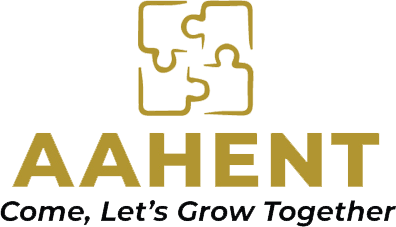Data Modernization Strategies for 2024 | AAHENT
In the age of information overload, data modernization is a hub of opportunities for businesses seeking to thrive. It has become a necessity for staying ahead in the competitive market world. By utilizing the full potential of advanced technologies like machine learning and analytics, organizations can unlock the full potential within their data.
This article has summarized all the information linked with data modernization, its benefits, importance, and strategies for your successful data modernization process.
Understanding Data Modernization
Data modernization is the process of updating data from old/legacy databases to new and modern databases. The method is essential for organizations handling diverse forms of data like images, social media, comments, and healthcare records. Embracing modern architectures like cloud data warehouses and lakes over traditional methods enhances decision-making power across the board.
Benefits of Data Modernization
Companies frequently face the challenges of scattered data dispersed among various outdated solutions and applications for both in-cloud and on-premises stores. To utilize the full potential of your data, it is essential to integrate and unite the data most innovatively.
Scattered data often creates an obstacle to analytics initiatives. In such an environment, analytics tools won’t be enough to provide the insights needed for informed decision-making. Data modernization gives you a solution to develop systems and processes to generate revenue. Below is the list of numerous benefits that data modernization brings to business operations:
1. Enhanced Data Accessibility:
Data modernization eliminates barriers between different data sources, making it easier for stakeholders to access and utilize all the required and related information across the organization.
2. Improved Decision-making Process:
With successful data integration, it becomes easy to provide more accurate and timely insights, empowering decision-makers to make accurate and informed choices that result in better drive business success.
3. Increased Flexibility and Efficiency:
Modernized data infrastructure enables faster data, flexible processing, and efficient analysis. It allows businesses and shareholders to adapt to market changes, customer needs, and emerging opportunities.
4. Cost Efficient:
Modernizing data storage and streamlining processes result in cost reduction, minimizing downtime, and optimizing resource utilization. By investing in modern data solutions, organizations can pave the way for long-term sustainable growth with cost savings guaranteeing competitive market growth.
5. Enhanced Security and Compliance:
Modern data platforms offer maximum security features and compliance measures, ensuring complete protection of your sensitive data from threats, risks, and breaches, ensuring adherence to regulatory requirements.
Data Modernization Strategies
There is a wide range of data modernization strategies to choose from, such as open data management or data governance. However, your choice of strategy will make all the difference; choosing from the list can be complicated, but it all depends on the needs of your company. The below few tricks can help you optimize your data modernization efforts.
1. Gather Your Data and Make It into One:
Keeping your data scattered across multiple systems can be complicated when it comes to finding the correct solution or making an update. However, a consolidated database acts as the best solution; it makes data finding and updating tasks easier and more efficient. It helps companies learn new things by looking at all the insights in one place.
2. Be Aware of Your Data Assets:
Knowing the data assets available in your organization acts as one crucial step in the process of data modernization effort. It helps you identify the best option for modernizing or updating the data.
3. Machine Learning and Artificial Intelligence Can Never Go Wrong:
These technologies can bring up a list of advantages for data modernization. Some of the finest important functions include automated extraction of unsaturated data, predictive analytics, and workflow automation.
4. Protect Your Data:
Data safety is the goal, and to keep your data protected and secure, it is important to use encrypted connections when transmitting it over open networks. Encryption is considered the best, as it makes it hard for everyone to read your data without permission.
5. Improve Your Data Quality:
The best way to modernize your data is to cleanse it. This process involves removing redundant, invalid, and inaccurate values from the existing field so that new data remains refreshed, cleaned, accurate, and relevant. It acts as the best option to perform before performing any of the big data migrations.
How to Modernize Data with AAHENT?
AAHENT helps businesses in data modernization, empowering businesses with cutting-edge tools and expertise. AAHENT works with the motive to simplify tasks such as data mapping, identifying sensitive information, and cleansing data. Connect with AAHENT now and explore the opportunities that the companies offer.

Hi, I am Anant, co-founder and director at AAHENT Consulting. I am a technology enthusiast and loves to discuss about software product development, latest technology trends. I am mostly focused on business analysis, project management and client management.

